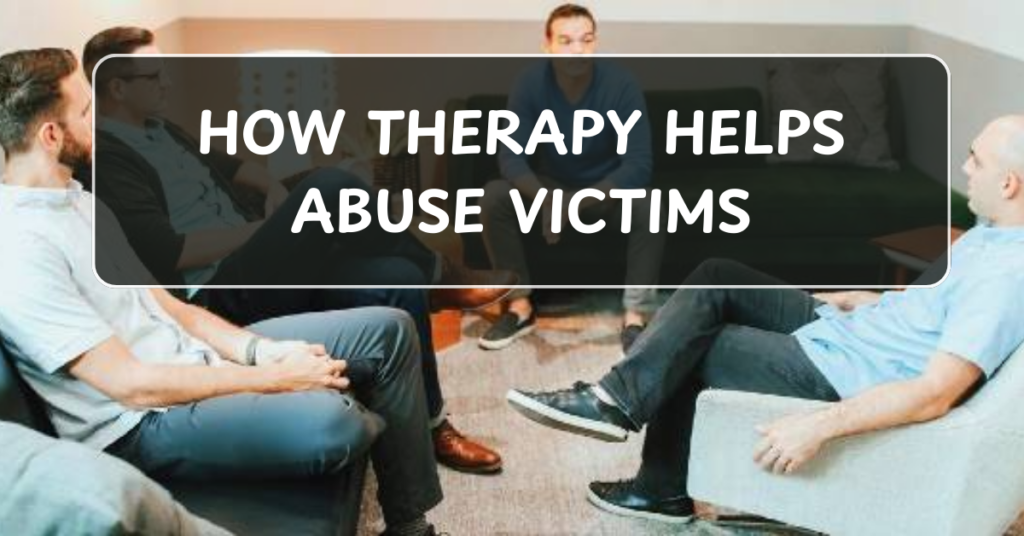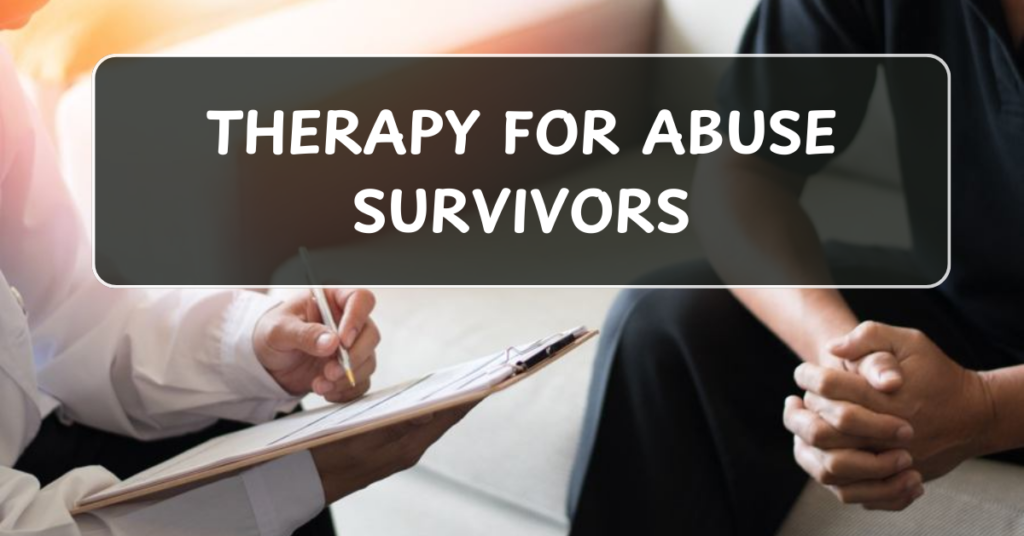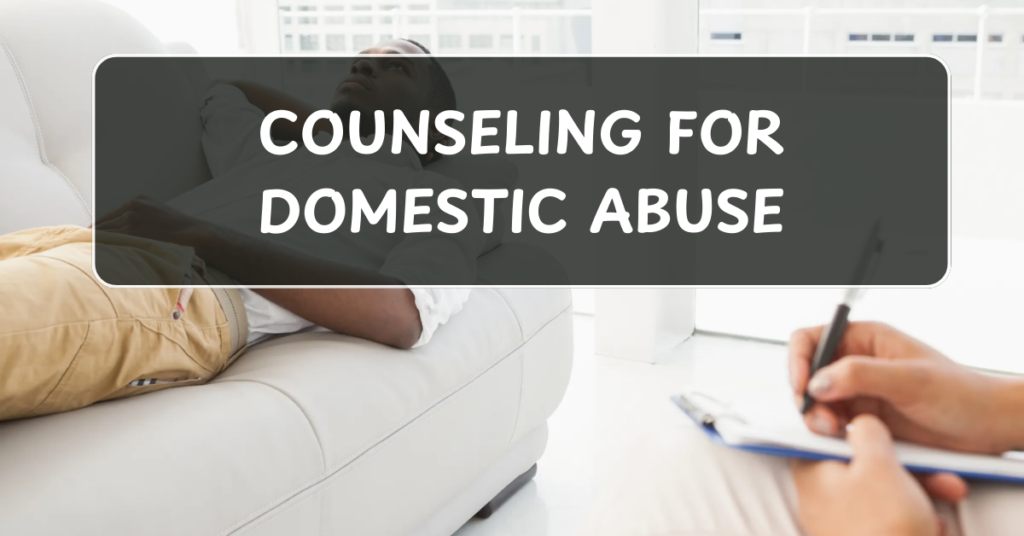
Experiencing abuse—whether physical, emotional, or psychological—can leave lasting scars on a person’s well-being. Survivors often face challenges in processing their trauma, rebuilding trust, and regaining control over their lives. Therapy plays a vital role in the healing journey for abuse victims, offering a supportive environment to confront painful memories, understand the effects of abuse, and rebuild a sense of self-worth and empowerment. In this article, we explore how therapy helps abuse victims recover, offering emotional healing, practical tools, and a path to reclaiming their lives.
1. Providing a Safe and Supportive Space
- Nonjudgmental Environment: Therapy offers abuse survivors a safe, nonjudgmental space where they can express their feelings, fears, and experiences without the fear of shame or retaliation. This safe space is crucial for individuals who may have been silenced or invalidated by their abuser.
- Building Trust: Victims of abuse often struggle with trusting others, especially if their abuser was someone close to them. A therapist’s role is to rebuild trust by demonstrating empathy, consistency, and respect for boundaries, helping the survivor gradually open up and process their experiences.
2. Processing Trauma and Painful Emotions
- Confronting the Trauma: Therapy helps survivors process the trauma of abuse in a controlled and safe environment. Rather than avoiding or suppressing painful memories, therapy provides a structured approach to confront these memories, validate the survivor’s feelings, and begin healing.
- Understanding Emotional Impact: Abuse can leave emotional scars, leading to feelings of guilt, shame, anger, anxiety, and depression. Therapy helps individuals understand the complex emotions associated with abuse, allowing them to separate their identity from the abuse and recognize that they are not defined by what they’ve been through.
- Healing from Emotional Wounds: Victims of abuse often struggle with deep emotional wounds that affect their self-worth. Therapy works to heal these wounds by promoting self-compassion and helping survivors realize that they are worthy of love, respect, and healing.
3. Rebuilding Self-Esteem and Empowerment
- Restoring Sense of Self: Abuse often strips away a survivor’s sense of self and agency. Therapy helps rebuild a positive self-image by empowering survivors to reclaim their voice, set boundaries, and recognize their strengths and resilience.
- Breaking the Cycle of Abuse: Many survivors of abuse may have been in toxic relationships or grew up in abusive environments where unhealthy patterns were normalized. Therapy helps break the cycle of abuse by helping individuals identify harmful patterns and learn healthier ways to engage in relationships and protect themselves from future harm.
- Empowering Decision-Making: Survivors often feel helpless or controlled by their abuser, leaving them with little agency in their lives. Therapy empowers survivors to make decisions about their future, their boundaries, and how they want to shape their lives moving forward.
4. Building Healthy Coping Strategies
- Managing Triggers and Flashbacks: Survivors of abuse may experience flashbacks or emotional triggers that bring up memories of the abuse. Therapy teaches coping strategies, such as grounding techniques, mindfulness, and relaxation exercises, to help individuals manage and overcome these triggers in a healthy way.
- Developing Emotional Regulation Skills: Therapy helps survivors develop skills for managing intense emotions, such as anger, sadness, or fear. By learning emotional regulation techniques, survivors can better handle difficult emotions without resorting to unhealthy coping mechanisms like substance abuse or self-harm.
- Learning Stress-Reduction Tools: The trauma of abuse often leads to chronic stress and anxiety. Therapy introduces tools for stress reduction, such as breathing exercises, meditation, and cognitive reframing, to help survivors manage day-to-day challenges and reduce overall stress.
5. Addressing Relationship Dynamics and Boundaries
- Improving Relationships: Abuse survivors may struggle with building and maintaining healthy relationships due to fear, distrust, or the impact of previous trauma. Therapy provides guidance on improving communication, setting healthy boundaries, and developing trust in relationships with others.
- Understanding Healthy Boundaries: One of the most important aspects of therapy for abuse victims is learning to set and maintain healthy boundaries. Survivors are taught how to recognize toxic behaviors, assert themselves, and protect their emotional well-being by setting clear boundaries with others.
- Overcoming Codependency: In some cases, abuse survivors may develop codependent tendencies, becoming overly reliant on others for emotional validation. Therapy helps survivors break free from codependency and establish healthier, more balanced relationships.
6. Healing from Post-Traumatic Stress Disorder (PTSD)
- Addressing PTSD Symptoms: Many abuse survivors experience symptoms of Post-Traumatic Stress Disorder (PTSD), such as flashbacks, nightmares, hypervigilance, and emotional numbness. Therapy helps individuals process and manage these symptoms through techniques such as Cognitive Behavioral Therapy (CBT) and Eye Movement Desensitization and Reprocessing (EMDR).
- Desensitizing Trauma Triggers: Therapy helps survivors gradually desensitize to the trauma triggers that provoke anxiety or panic, allowing them to regain a sense of control over their emotional responses. This process is vital for those who have experienced prolonged abuse or complex trauma.
- Restoring Safety: PTSD can make the world feel unsafe, even after the trauma has ended. Therapy helps survivors restore a sense of safety by teaching them how to regulate their emotions, manage triggers, and gradually reintegrate into their lives without the constant fear of re-traumatization.
7. Types of Therapy for Abuse Survivors
- Cognitive Behavioral Therapy (CBT): CBT helps survivors identify and challenge negative thought patterns that stem from abuse, such as feelings of guilt, shame, and fear. This therapy is particularly effective in helping individuals reframe their thoughts and develop healthier coping strategies.
- Trauma-Focused Cognitive Behavioral Therapy (TF-CBT): TF-CBT is a form of therapy specifically designed to help survivors of trauma process their traumatic experiences and reduce symptoms of PTSD. This therapy combines cognitive behavioral techniques with trauma processing to help individuals heal.
- Eye Movement Desensitization and Reprocessing (EMDR): EMDR is an effective treatment for individuals who have experienced trauma. It helps survivors process and reframe traumatic memories by using bilateral stimulation to reduce the emotional charge attached to those memories.
- Dialectical Behavior Therapy (DBT): DBT is useful for survivors who struggle with intense emotions or self-destructive behaviors. It teaches skills such as emotional regulation, mindfulness, and interpersonal effectiveness, all of which help survivors better cope with the effects of abuse.
8. Conclusion: Healing and Moving Forward
Therapy is an essential tool for abuse survivors, offering a pathway to healing, self-discovery, and empowerment. It helps individuals process their trauma, rebuild their self-esteem, develop healthy coping strategies, and regain control over their lives. While the journey to healing may be challenging, therapy provides the support, guidance, and tools necessary to move forward with strength and resilience. If you or someone you know is struggling with the effects of abuse, reaching out for therapy is the first step toward a brighter, more fulfilling future. Healing is possible, and therapy can help survivors reclaim their lives and find peace once again.


